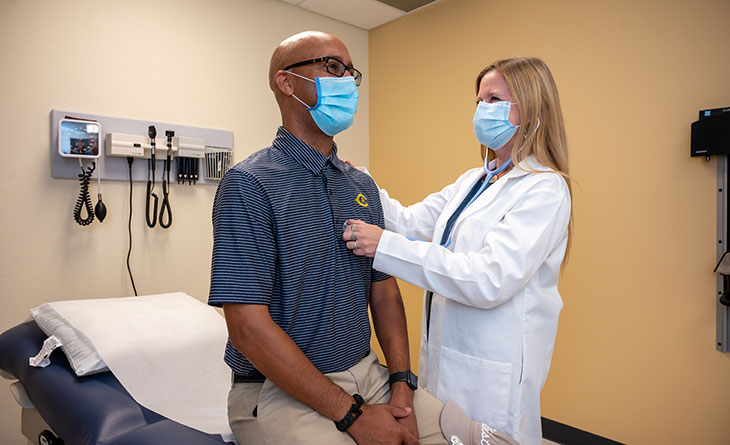Nauseous Nauseated: What's the Distinction and Exactly How to Treat It
Nauseous Nauseated: What's the Distinction and Exactly How to Treat It
Blog Article
Understanding the Important Role of Main Care in Comprehensive Wellness Administration and Illness Prevention Strategies
The integral role of main treatment in thorough health administration and condition avoidance techniques can not be overemphasized, as it offers as the foundation for efficient health care distribution. By focusing on preventive care and promoting enduring patient-provider connections, key treatment practitioners are uniquely positioned to attend to private wellness needs while also influencing wider area wellness end results.
Definition of Primary Care
Although the idea of key treatment might differ throughout various medical care systems, it fundamentally describes the initial factor of call for patients within the healthcare continuum. Primary care includes a broad series of services, consisting of preventative treatment, medical diagnosis, therapy, and monitoring of persistent problems. It is identified by its comprehensive, available, and collaborated technique, making sure patients obtain all natural treatment customized to their private requirements.
Medical care providers, frequently family doctor, internists, or doctors, play a critical duty in developing continuous patient-provider connections. This continuity of treatment fosters trust fund and assists in much better health outcomes via routine tracking and customized treatments. The emphasis on a patient-centered strategy permits for the factor to consider of social, economic, and psychological variables that influence health.
Furthermore, health care acts as an important component in navigating the medical care system, directing people via specialized solutions when required. By acting as a main hub for wellness management, primary treatment not only addresses prompt medical problems yet also stresses the significance of total wellness and safety nets. Therefore, its interpretation prolongs past mere treatment to incorporate a comprehensive structure for health promo and disease avoidance.
Advantages of Preventive Care
Preventative treatment offers various advantages that significantly enhance private and neighborhood wellness outcomes. By focusing on the prevention of illness and wellness concerns before they arise, precautionary care minimizes the occurrence of significant health conditions, thereby lowering health care expenses in time. Early discovery with routine testings and assessments enables prompt interventions, which can protect against the development of diseases, causing boosted quality of life for clients.
In addition, preventative care promotes health and wellness education and awareness, empowering individuals to make informed choices concerning their way of livings and wellness actions. This positive technique motivates regular check-ups, inoculations, and health and wellness screenings, which not just profit people however also add to the total health and wellness of the neighborhood. By decreasing the burden of persistent illness and stopping outbreaks of infectious conditions, precautionary care plays an essential role in boosting public health and wellness.
Along with boosting private health end results, precautionary care cultivates a much more efficient health care system by reducing the demand for substantial treatments and hospital stays. Eventually, buying precautionary care is necessary, as it helps with much healthier populations, lowers health and wellness disparities, and makes sure better source allocation within the health care system.
Role in Persistent Condition Administration
The aggressive techniques used in preventive treatment are instrumental in the administration of persistent illness, which usually require recurring attention and resources. Medical care carriers play a critical function in this context, acting as the first point of call for clients with persistent problems such as diabetes, hypertension, and heart problem. They contribute in establishing customized monitoring plans that include normal monitoring, medicine administration, and way of living modifications.

Furthermore, health care suppliers frequently utilize technology and data analytics to track person development and recognize potential issues early. This proactive tracking boosts patient interaction and encourages individuals to take an active duty in their health administration. Inevitably, the integration of medical care right into persistent disease monitoring fosters enhanced quality of life and decreases the concern on health care systems.
Patient-Provider Relationships

Additionally, a robust patient-provider connection boosts patient interaction and self-management. Providers who spend time in recognizing their clients' histories, choices, and motivations are better furnished to sustain them in handling their conditions. This customized strategy can lead to improved health and wellness end results, as patients are more probable to adhere to referrals when they feel valued and understood.
Furthermore, connection of treatment plays a substantial duty in strengthening these relationships. Routine interactions in between individuals and carriers facilitate ongoing assessment and adjustments to treatment plans, which is essential for handling chronic diseases efficiently. This continuity not only promotes better health outcomes but additionally lowers medical care prices by decreasing the demand for immediate treatments.
Influence On Neighborhood Health And Wellness
Solid patient-provider connections substantially influence community health end results, as they add to a much more engaged and informed populace. rhino virus. When patients really feel linked to their main care providers, they are most primary care provider near me likely to seek preventative solutions, adhere to treatment strategies, and take part in health-promoting habits. This engagement fosters a society of health, where individuals prioritize their wellness and the wellness of their community
In addition, effective interaction in between individuals and service providers improves wellness literacy, equipping people to make enlightened decisions regarding their care. This enhanced understanding can cause reduced prices of persistent diseases, as clients ended up being positive in handling their wellness. Additionally, strong connections promote the recognition of community-specific health challenges, allowing service providers to tailor treatments that resolve local needs.
Additionally, medical care functions as an essential access factor for wellness resources, connecting patients with necessary services and support networks. This comprehensive approach not only boosts specific health but likewise enhances neighborhood cohesion, as locals work collaboratively to address health disparities. On the whole, the influence of durable patient-provider connections prolongs beyond the clinic, cultivating much healthier neighborhoods and adding to a sustainable healthcare system.
Conclusion
In summary, key treatment is essential to reliable health and wellness administration and illness avoidance. By stressing precautionary care and chronic disease administration, health care promotes very early detection and personalized therapy plans. Solid patient-provider connections foster trust and boost adherence to health and wellness recommendations. Inevitably, the integration of key care right into community wellness techniques results in improved wellness outcomes and lowered healthcare prices, underscoring its essential role in advertising total neighborhood well-being.
Report this page